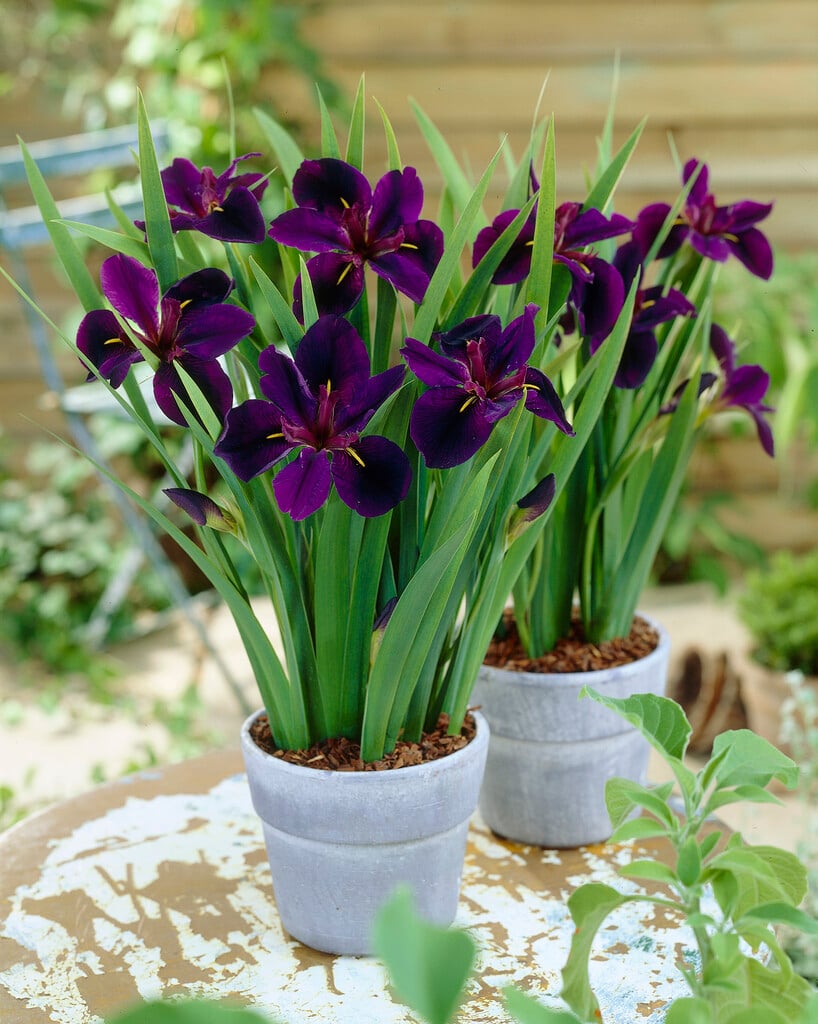Iris 'Black Gamecock' (La)
iris 'Black Gamecock'
A moisture-loving plant that can be planted at the edges of a pond or streamside. It's bright green strap-like, sword shaped leaves persist in sheltered areas throught winter. In late spring/ early summer it produces stems, of up to 70cm, topped by velvety, deep purple flowers with a flash of golden yellow at the base of the petals

Buy this plant
Size
Ultimate height
0.5–1 metresTime to ultimate height
1–2 yearsUltimate spread
0.5–1 metresGrowing conditions
Moisture
Poorly–drainedpH
Acid, NeutralColour & scent
| Stem | Flower | Foliage | Fruit | |
| Spring | Green | |||
|---|---|---|---|---|
| Summer | Purple Black Yellow | Green | ||
| Autumn | Green | |||
| Winter | Green |
Position
- Full sun
- Partial shade
Aspect
East–facing or South–facing or West–facing
Exposure
Exposed or ShelteredDrought resistance
Yes Hardiness
H4Botanical details
- Family
- Iridaceae
- Native to GB / Ireland
- No
- Foliage
- Semi evergreen
- Habit
- Clump forming
- Potentially harmful
- Harmful if eaten. Wear gloves and other protective equipment when handling. Pets: Harmful if eaten. For further information and contact numbers regarding pets, see the HTA guide to potentially harmful plants
- Genus
Iris may be rhizomatous or bulbous perennials, with narrow leaves and erect stems bearing flowers with 3 large spreading or pendent fall petals, alternating with 3 erect, often smaller, standard petals, in late winter, spring or early summer
- Name status
Accepted
- Horticultural Group
- Louisiana Hybrid irises are rhizomatous perennials with beardless flowers 7-20cm across, borne several to each stem in spring and early summer
How to grow
Cultivation
Grow in reliably damp soil that is rich in organic matter in a sun or partial shade. Can be grown as a marginal plant in ponds and along streamsides
Propagation
Propagate by division in late summer after flowering. See dividing irises
Suggested planting locations and garden types
- City and courtyard gardens
- Cottage and informal garden
- Mediterranean climate plants
- Gravel garden
- Flower borders and beds
Pruning
No pruning required. Cut back faded flower stems after flowering. Remove withered leaves in autumn
Pests
Diseases
May be susceptible to aphid-borne viruses, bacterial soft rot and grey moulds; see Iris diseases
Get involved
The Royal Horticultural Society is the UK’s leading gardening charity. We aim to enrich everyone’s life through plants, and make the UK a greener and more beautiful place.